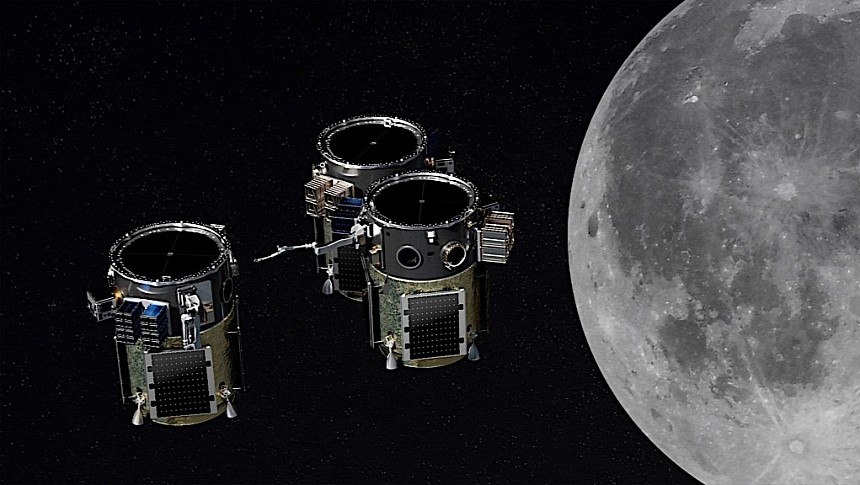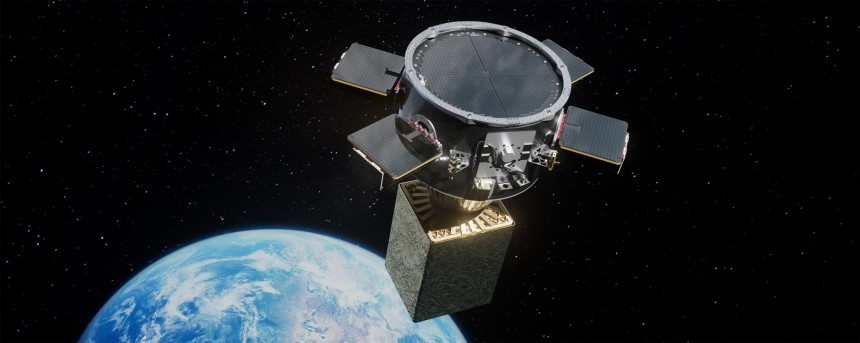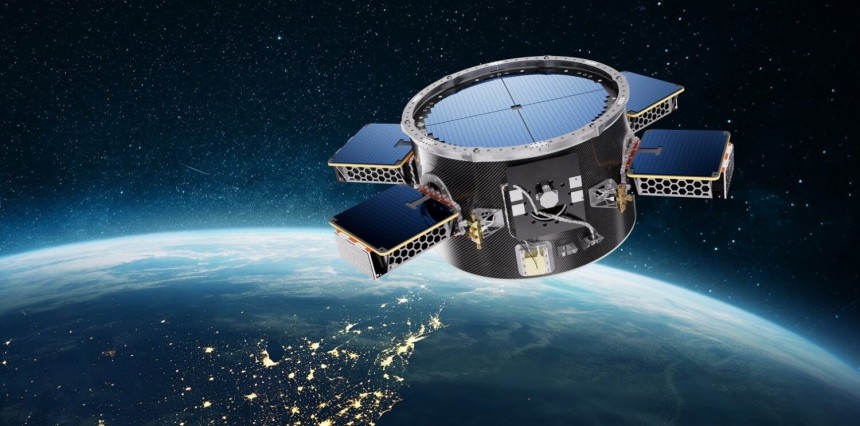The coming years will forever be recorded by the history books as the ones that made or broke humanity's space exploration dreams. Most of us are of course rooting for those dreams to be made, and that includes one of America's premiere research agencies, DARPA.
Space exploration as we know it relies on individual, mostly uncoordinated efforts. Ships launch from all over the place, and carry with them to orbit and elsewhere gear that is most of the time incompatible with what others are doing, and everybody seems to be pursuing its own goal in space.
This fragmented way of doing things served us well so far, but it will not work if we are to truly become a solar system-wide civilization. And that's what DARPA plans to make clear with a program called the 10-Year Lunar Architecture (LunA-10) study.
In all fairness more of a study than a program, LunA-10 plans to "rapidly develop foundational technology concepts that move away from individual scientific efforts within isolated, self-sufficient systems, toward a series of shareable, scalable systems that interoperate."
In words we can understand that means that instead of each nation and company pursuing its own goals concerning the Moon while using varied technologies, they should do so while using an integrated infrastructure.
For that to happen though a series of technologies and procedures will have to be developed. That's exactly what LunA-10, announced by DARPA in the summer of this year, plans to accomplish.
More to the point, the agency is asking companies with an interest in space exploration to come up with solutions for a shared lunar ecosystem, with multi-mission lunar systems in place that can allow a multitude of operations to be performed or services to be provided from the same location.
An example of such a shared piece of infrastructure would be a power station that could also act as a communications relay, or even a navigational beacon. Another would be aggregated spacecraft hubs in lunar orbit, parking lots if you will for the ships going up there from Earth.
The study started in the summer of 2022 and will end in March next year with DARPA announcing the most promising technologies. This month, though, the agency announced the list of companies that will take part in the program, and there are 14 of them (full list at the bottom of the text).
Each of these groups proposed something that could advance the goals of lunar exploration in a more coordinated fashion. Depending on each of the companies' areas of expertise, these solutions have to do with one of the following areas of interest: transit and mobility, energy, communications, and infrastructure.
It's unclear at this point what each of the 14 companies is bringing to the table, and almost none of them have made public what they're thinking about. One of them, however, did: Firefly Aerospace.
The spacecraft hub I mentioned earlier is Firefly's design. Although at first glance it kind of looks like a set of drums lost in space, it's in fact a sort of orbital gas station slash logistics hub meant to supply spacecraft with fuel and other services.
According to the company using such hubs would decrease on-orbit mission response times from years to days. The hubs, based on the Elytra systems we discussed last year, will serve the needs of both spacecraft that head their way on purpose, but also possibly unforeseen ones of other spacecraft that operates in the space around the Moon.
The ships and the hub will be able to dock with each other and perform fuel transfer, but also power and thermal resources sharing. Payload delivery, cargo transfer, and de-orbiting services could also be provided by these hubs.
For that to happen, Firefly will first have to properly underline the "robotic interfaces, operational protocols, and distributed controls necessary to allow any supplier's spacecraft to aggregate on the hub."
The first such hubs will be built at the Earth-Moon Lagrange points, places in the space between the two celestial bodies where their gravity cancels each other out and allows a structure to mostly stay put instead of drifting through vacuum.
Like all other companies taking part in the project, Firefly should be capable of presenting a brief on its Elytra-based idea in April next year, and a final report two months later. If all the stars align, the spacecraft hubs, and all the other ideas put forward by the competing companies, will have to be ready for deployment by 2035.
DARPA is not funding any of the ideas through the LunA-10 study, but it does plan to "provide economic expertise to all LunA-10 teams to help analyze and validate definitions of a critical mass to create a thriving, survivable lunar economy."
We'll try to find out the exact details of what the other companies are planning and come back on this story as soon as we learn more.
The 14 companies involved in the project are:
This fragmented way of doing things served us well so far, but it will not work if we are to truly become a solar system-wide civilization. And that's what DARPA plans to make clear with a program called the 10-Year Lunar Architecture (LunA-10) study.
In all fairness more of a study than a program, LunA-10 plans to "rapidly develop foundational technology concepts that move away from individual scientific efforts within isolated, self-sufficient systems, toward a series of shareable, scalable systems that interoperate."
In words we can understand that means that instead of each nation and company pursuing its own goals concerning the Moon while using varied technologies, they should do so while using an integrated infrastructure.
For that to happen though a series of technologies and procedures will have to be developed. That's exactly what LunA-10, announced by DARPA in the summer of this year, plans to accomplish.
More to the point, the agency is asking companies with an interest in space exploration to come up with solutions for a shared lunar ecosystem, with multi-mission lunar systems in place that can allow a multitude of operations to be performed or services to be provided from the same location.
The study started in the summer of 2022 and will end in March next year with DARPA announcing the most promising technologies. This month, though, the agency announced the list of companies that will take part in the program, and there are 14 of them (full list at the bottom of the text).
Each of these groups proposed something that could advance the goals of lunar exploration in a more coordinated fashion. Depending on each of the companies' areas of expertise, these solutions have to do with one of the following areas of interest: transit and mobility, energy, communications, and infrastructure.
It's unclear at this point what each of the 14 companies is bringing to the table, and almost none of them have made public what they're thinking about. One of them, however, did: Firefly Aerospace.
The spacecraft hub I mentioned earlier is Firefly's design. Although at first glance it kind of looks like a set of drums lost in space, it's in fact a sort of orbital gas station slash logistics hub meant to supply spacecraft with fuel and other services.
According to the company using such hubs would decrease on-orbit mission response times from years to days. The hubs, based on the Elytra systems we discussed last year, will serve the needs of both spacecraft that head their way on purpose, but also possibly unforeseen ones of other spacecraft that operates in the space around the Moon.
For that to happen, Firefly will first have to properly underline the "robotic interfaces, operational protocols, and distributed controls necessary to allow any supplier's spacecraft to aggregate on the hub."
The first such hubs will be built at the Earth-Moon Lagrange points, places in the space between the two celestial bodies where their gravity cancels each other out and allows a structure to mostly stay put instead of drifting through vacuum.
Like all other companies taking part in the project, Firefly should be capable of presenting a brief on its Elytra-based idea in April next year, and a final report two months later. If all the stars align, the spacecraft hubs, and all the other ideas put forward by the competing companies, will have to be ready for deployment by 2035.
DARPA is not funding any of the ideas through the LunA-10 study, but it does plan to "provide economic expertise to all LunA-10 teams to help analyze and validate definitions of a critical mass to create a thriving, survivable lunar economy."
We'll try to find out the exact details of what the other companies are planning and come back on this story as soon as we learn more.
The 14 companies involved in the project are:
- Blue Origin
- CisLunar Industries
- Crescent Space Services LLC
- Fibertek, Inc.
- Firefly Aerospace
- GITAI
- Helios
- Honeybee Robotics
- ICON
- Nokia of America
- Northrop Grumman
- Redwire Corporation
- Sierra Space
- SpaceX








